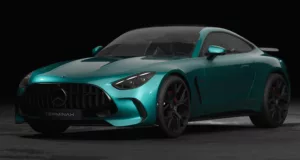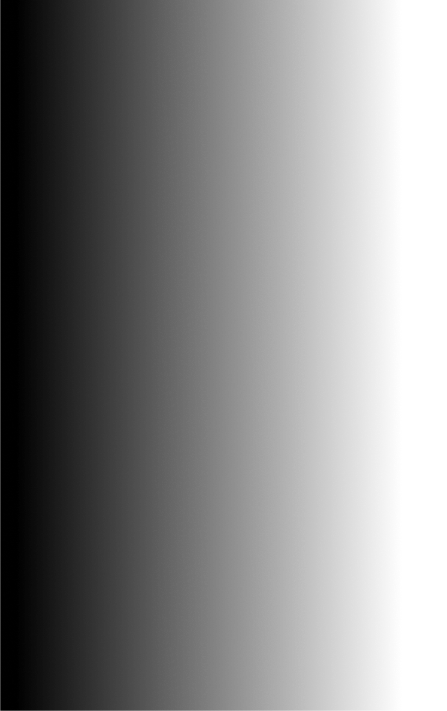Window Tint Laws by State Chart: How TERMINAX Helps You Navigate Tinting Regulations
Window Tint Laws by State Chart: How TERMINAX Helps You Navigate Tinting Regulations
Window tinting is more than just a stylish addition to your vehicle. It serves a functional purpose by improving privacy, reducing glare, and offering protection against harmful UV rays. However, the legal regulations for window tinting vary from state to state. What’s permitted in one state might be illegal in another, making it essential for vehicle owners to understand their state’s tinting laws to avoid fines or legal complications.
In this blog, we’ll break down the importance of knowing your state’s tint laws, how TERMINAX ensures legal compliance, and why understanding these regulations matters for your vehicle’s safety and functionality.

Why Are Window Tint Laws Important?
While window tinting offers numerous benefits, safety and visibility are the main concerns driving window tint laws across the U.S. Local governments regulate the Visible Light Transmission (VLT) percentage to ensure that drivers can maintain clear visibility while on the road.
Safety of Drivers and Others on the Road
Window tint laws are primarily designed to ensure that drivers can see clearly, especially when driving at night or in low-light conditions. Dark tints that reduce visibility can create dangerous driving situations, not just for the driver but for pedestrians and other vehicles as well.
Protecting Law Enforcement Officers
When interacting with drivers, law enforcement officers rely on visibility through windows for safety reasons. A legal tint ensures that officers can see into a vehicle when conducting traffic stops, making interactions smoother and safer for everyone.
Maintaining Resale Value
Many potential buyers look for legally compliant tinting when purchasing a used vehicle. Illegal tint can make it harder to sell a car and may even result in the need to remove the tint entirely, reducing the car’s resale value.
The Variance of Window Tint Laws Across States
Window tinting laws are not standardized nationwide, and each state has its own set of rules and regulations. To better understand how state-specific tint laws affect your vehicle, it’s important to know the Visible Light Transmission (VLT) limits, the reflectivity rules, and the types of vehicles affected by these laws. While we won’t go over every state in detail, here’s a breakdown of key factors you need to know.
VLT Percentages
Visible Light Transmission (VLT) is the percentage of light that can pass through a tinted window. The higher the percentage, the lighter the tint. For example, 70% VLT means that 70% of light can pass through the window, leaving only 30% blocked. In contrast, a 5% VLT would block 95% of the light, resulting in a much darker tint.
Different states allow varying VLT percentages for different windows. Commonly regulated windows include:
- Windshield
- Front side windows
- Rear side windows
- Rear window
For example, in California, the VLT limit for front side windows is 70% (meaning the window must allow at least 70% of light to pass through), while in Florida, the limit is 28%. Texas allows 25% VLT for front side windows.
Reflectivity Restrictions
Some states impose restrictions on the reflectivity of window tint films. Reflective tints have a shiny, mirror-like appearance and can contribute to dangerous glare. In states such as Virginia and Washington, reflective films are highly regulated, with limits on how much light can be reflected off the tint.
Sedans vs SUVs
Many states treat sedans and SUVs differently when it comes to window tinting. SUVs, vans, and trucks typically have more lenient laws for rear windows. While sedans may face stricter limits on their rear windows, SUVs and trucks often face fewer restrictions for the rear side windows and rear windshields.
Exemptions and Special Regulations
Some states allow exemptions to window tinting laws for certain medical conditions that require more sunlight. Drivers with these conditions may be allowed to tint their windows beyond the typical legal limits.
How to Find Your State’s Tint Law
The easiest way to stay compliant with tinting regulations is to understand your state’s laws. Fortunately, there are several online resources available that provide charts and tools to help you check the legal tinting limits in your state.
Here’s a general breakdown of how to interpret a state’s tinting chart:
- Windshield Tinting: Look for the allowable tint for the top 5 inches of your windshield (if applicable) and whether reflective tints are allowed.
- Front Side Windows: This is usually the most regulated area. States may require at least 70% VLT or as low as 25%. Check if the state requires a minimum level of VLT for driver visibility.
- Rear Side Windows and Rear Windows: These windows often have less strict VLT rules, especially for SUVs and trucks, but regulations may vary.
- Reflectivity: If a state regulates reflective tinting, make sure the film you choose complies with these limits.
How TERMINAX Helps You Stay Compliant with Tint Laws
At TERMINAX, we understand how complex and varied tinting laws can be across different states. We make it our mission to ensure that your vehicle gets the perfect tint that provides all the benefits—privacy, UV protection, and comfort—while still complying with local regulations.
State-Specific Tinting Services
Whether you’re in California, New York, or Florida, TERMINAX knows the exact tinting regulations for your area. We ensure that your car is tinted with the legal limits in mind, helping you avoid fines and complications down the road.
Customized Tint Solutions
We know that each vehicle is different. Whether you have a sedan, SUV, or truck, our team at TERMINAX offers customized tint solutions based on your preferences and your vehicle type. Our experts will recommend the right VLT to meet your needs while staying compliant with state laws.
High-Quality Films for Long-Term Performance
The tint films we use at TERMINAX provide excellent UV protection, heat rejection, and glare reduction. Our films are built to last and will not peel, bubble, or fade over time, even under extreme weather conditions. We ensure that the quality of your tint matches its compliance with your state’s laws.
Professional Installation
Proper installation is critical to the effectiveness of your tint. At TERMINAX, we use expert installers who are trained in applying tint films without damaging your windows. With us, you’ll get a professional installation that ensures maximum performance and legal compliance.
Stay Compliant and Stylish with TERMINAX Window Tinting
While window tinting provides valuable benefits like privacy, UV protection, and a cooler vehicle interior, it’s essential to stay informed about your state’s tinting laws. With the varied window tint laws by state, it can be overwhelming to make sure you comply.
Luckily, TERMINAX is here to help. Our expert team ensures that your tinting is fully compliant with your state’s Visible Light Transmission (VLT) and reflectivity limits, all while providing the stylish and functional tint that suits your needs. From sedans to SUVs, we ensure your vehicle’s windows are tinted the right way.


